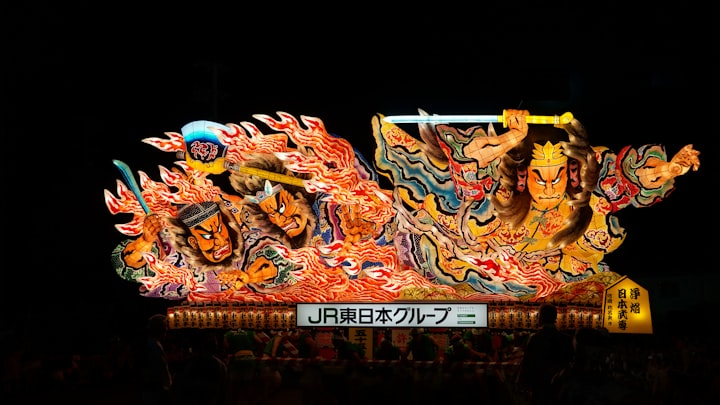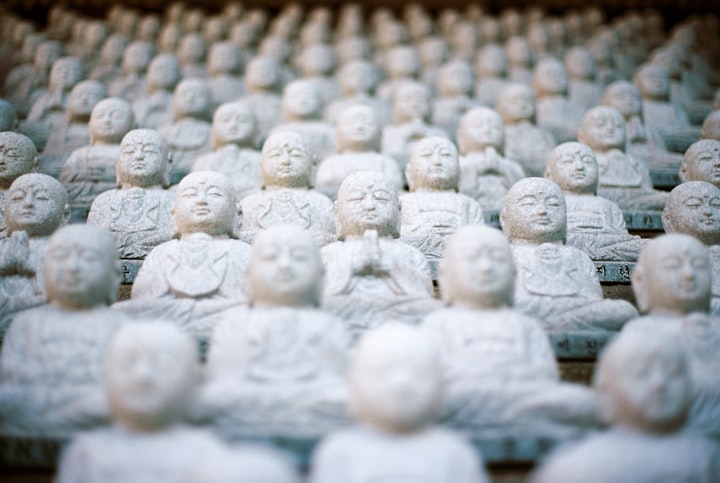Top 5 Interesting Japanese Artforms
Glace through what makes Japanese Art Special

Japanese art is a fascinating amalgamation of tradition, aesthetics, and philosophy, reflecting the nation's rich cultural heritage. From the serene beauty of ink paintings to the vibrant world of contemporary manga, Japanese artforms offer a diverse range of expressions. In this exploration, we delve into five intriguing Japanese artforms and also unravel why fishes, a recurring motif, hold significant symbolism in Japanese art.
1. Ukiyo-e (Woodblock Prints)
Ukiyo-e, which translates to "pictures of the floating world," is a genre of Japanese art that flourished from the 17th through 19th centuries.
These woodblock prints and paintings predominantly featured scenes from kabuki theatre, sumo wrestling, landscapes, folk tales, and the beauty of women.
Artists like Hokusai and Hiroshige elevated Ukiyo-e to a level of international acclaim with their iconic works such as "The Great Wave off Kanagawa" and "The Fifty-three Stations of the Tōkaidō." Ukiyo-e's influence extended beyond Japan, inspiring Western artists like Vincent van Gogh and Claude Monet, marking a significant cultural exchange known as Japonisme.
2. Kintsugi (Golden Joinery)
Kintsugi is the uniquely Japanese art of repairing broken pottery with lacquer dusted or mixed with powdered gold, silver, or platinum. More than just a method of repair, Kintsugi is a philosophical expression, embracing the flaws and imperfections as part of an object's history. This art form celebrates each artifact's unique journey, highlighting the breaks as part of the beauty rather than something to disguise. Kintsugi offers a profound metaphor for embracing our flaws and experiences, making it a deeply resonant practice beyond the realm of art.

3. Ikebana (Flower Arrangement)
Ikebana, the Japanese art of flower arrangement, is more than just floral decoration. It's a disciplined art form where nature and humanity are brought together. Rooted in the philosophy of developing a closeness with nature, Ikebana values shape, line, and form. It's a meditative practice that emphasizes simplicity, harmony, and the delicate balance between the inherent beauty of the materials and the creative expression of the arranger. The arrangements are not merely aesthetically pleasing but also imbued with symbolism and seasonal references, reflecting the transient beauty of life.
4. Sumi-e (Ink Painting)
Sumi-e, or ink wash painting, is characterized by the use of black ink—the same used in East Asian calligraphy. This art form is deeply influenced by Zen Buddhism, capturing the unseen world's essence rather than its direct likeness. Sumi-e artists are renowned for their mastery in controlling the ink's gradation, achieving a variety of shades and depths with minimalistic strokes. The philosophy behind Sumi-e is the expression of the spirit or essence of the subject, emphasizing the beauty in simplicity and the importance of the empty space, or 'Ma,' as much as the inked areas.
5. Origami (Paper Folding)
Origami, the art of paper folding, is perhaps one of the most universally recognized Japanese art forms. It involves the transformation of a flat sheet of paper into a finished sculpture through folding and sculpting techniques, without cuts or glue. The crane is one of the most iconic origami designs, symbolizing peace and longevity. Origami is not only an art form but also a tool for education, therapy, and innovation, especially in fields like mathematics and engineering, demonstrating the intersection of art, science, and culture.

The Symbolism of Fishes in Japanese Art
Fishes, particularly koi fish, are a prevalent motif in Japanese art and culture, symbolizing good fortune, perseverance, and personal strength. In traditional Japanese folklore, the koi fish is revered for its determination and strength due to its ability to swim upstream and even leap waterfalls, a feat that is often likened to a warrior's struggle in adversity. This association is celebrated annually during Boys' Day (Tango no Sekku), where carp-shaped kites (koinobori) are flown to symbolize the desire for children to grow up brave and strong.

The incorporation of fish in Japanese art is not limited to koi; other species also carry significant meanings. For instance, the goldfish, introduced to Japan from China, is often associated with wealth and prosperity. In sumi-e paintings and woodblock prints, artists frequently depict fish to convey various themes, from the serenity of nature to the perseverance against life's challenges.
In the broader context, the presence of fish in Japanese art is deeply intertwined with the country's geographical identity as an island nation, where the sea plays a crucial role in daily life and spiritual beliefs. The depiction of fish is a celebration of nature's bounty and a reflection of the deep respect for the natural world that permeates Japanese culture.
Conclusion
Japanese art forms, with their rich traditions and symbolic depth, offer a window into the soul of Japan. From the serene elegance of Ikebana to the vibrant dynamism of Ukiyo-e, these art forms embody the harmonious balance between nature, spirit, and human creativity.
The symbolic use of fishes in Japanese art further enriches this cultural tapestry, weaving stories of perseverance, beauty, and the interconnectedness of life. Through these artistic expressions, we gain a deeper appreciation for the nuanced and profound perspectives that define Japanese aesthetics.
About the Creator
Janet J. Smith
I love playing the guitar in the woods, under the dreamyness of the moon. Ohh, and I'm also a finance consultant by day. :-)






Comments (1)
This was so informative. I was familiar with origami, koi fish importance and wonderfulnpaintings, but the Golden Joinery sounds so intricate and wonderful.